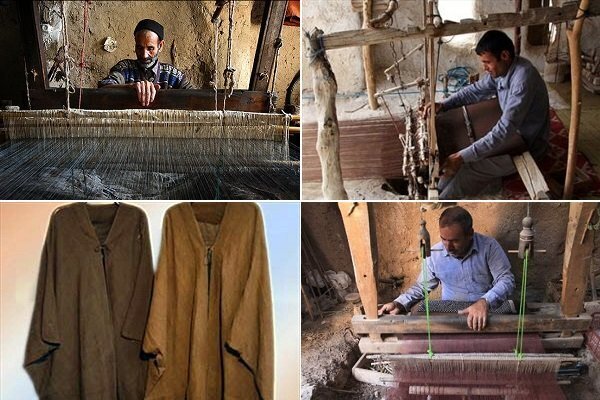Nain's traditional cloak on its way to global registration

TEHRAN – A traditional type of cloak which is produced in Na’in, Isfahan province, is undergoing the process of possible global registration at the initiative of Na’in Cultural Heritage Department, Na’in Municipality, and Isfahan Chamber of Commerce.
By registering this intangible cultural heritage, the famous handicrafts of Na’in are expected to be introduced to the world.
According to Mehr news agency, the history of Na’in cloak dates back 200 years. Na’in people used to export about 5,000 cloaks from this city annually to the Persian Gulf Arab countries and regional cold-weather countries in the 1970s, but today the weaving of cloaks has decreased, and if woven, they are exported to Lebanon and Syria, among other destinations.
This handicraft, the art of weaving of which is also part of the intangible heritage of the Na’in people in Isfahan province, is woven completely in one piece, and since its fabric is made of camel or sheep wool, it absorbs the cold in winter.
Spinning yarn should be done by young and old women, but unfortunately the number of people engaged in this work is very small, and the number of cloak weavers in Na’in has decreased significantly because it is not economically viable. For this reason and the lack of economic viability, Na’in faces a lack of public acceptance for cloak weaving, especially among young people.
Mahmoud Madanian, head of Na’in Cultural Heritage, Tourism and Handicrafts Department, stated that unfortunately, the Na’in cloak market has declined for various reasons in the past 40 years, one of which is the high price of cloak because seven stages of work are done manually and with great effort, and the output of this art has a high price.
A number of cloak weaving workshops in Na’in have been restored by the efforts of Cultural Heritage Department and restorers. Identifying artists in this field, issuing identification cards, issuing workshop production licenses for them, granting low-interest and long-term facilities to expand the workshops' production, marketing and providing products tailored to the needs of society from cloak fabrics, purchasing and providing a carding machine to facilitate the work of cloak weavers and eliminating their need for wool carding in nearby cities are among the measures to preserve and promote this centuries-old art.
Ezzatollah Zarghami, former Minister of Cultural Heritage, Tourism and Handicrafts, also said during his visit to Na’in two years ago: “Cloak Weaving of Mohammadieh is both a tourism complex and an area of job generation, which we will help to solve some of their problems and provide them with a market for exports.”
Nain's cloak, along with 26 handicrafts in Isfahan province, has been awarded seal of excellence. The plan to change the use of cloak fabric into vests, shawls, belts and other usable items was carried out with the cooperation of artisans, but it was a temporary solution, and the 2,000 people employed in this field have decreased to two people in one of the workshops in Mohammadieh.
Now, even though the cloak weaving in Na’in is facing serious problems, Madanian has given new news and talked about planning for possible global registration of the Na’in cloak. Because recently, the second planning session for possible global registration of the Na’in cloak was held in the Na’in Municipality by Na’in Cultural Heritage, Tourism and Handicrafts Department and with the presence of members of the Tourism Commission of Isfahan Chamber of Commerce, the Governor, the Mayor and the Chairman of the Na’in Islamic City Council.
In this meeting, it was decided that the steps for the global registration of the Na’in cloak should be followed up with special urgency and sensitivity by the Isfahan Chamber of Commerce, and that the Municipality and Cultural Heritage Department should provide the necessary assistance and cooperation.
The global registration of this ancient handicraft, which is produced in Mohammadieh in Na’in, can introduce the city of Na’in as a prominent tourist city, more than ever before, at the international level.
The history of Na’in dates back to nearly 2000 years, which makes it one of the oldest continuously settled towns in the Iranian plateau.
Na’in lies 170 km north of Yazd and 140 km east of Isfahan. Like much of the Iranian plateau, it has a desert climate, with a maximum temperature of 41 °C in summer and a minimum of -9 °C in winter.
In ancient times, the city was at the crossroads of a desert road connecting Tabas and Mashhad, and has been an important junction of converging trade routes since Sassanid times. Na’in was known for its pottery and textiles; Today it is best known for its fine hand-knotted carpets and hand-woven camel wool cloaks, which are made in the surrounding villages.
KD
